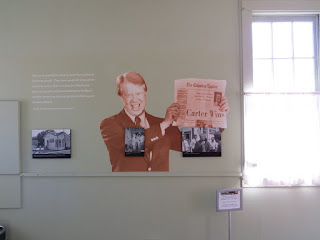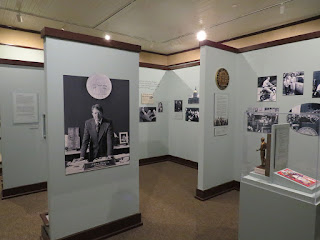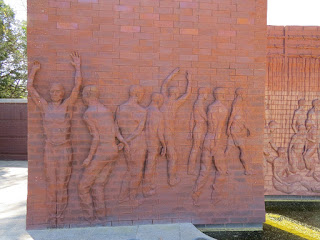Peanuts that is. On our way home, we stopped in Plains,
GA, the home of President Jimmy
Carter. He started his presidential
campaign from here with his headquarters in the old train depot. It is a very small town and the downtown main
street is nearly completely all about President Carter. You can visit the campaign headquarters and
imagine what it must have been like during those early days of the campaign for
the White House. Stroll the short main
street and get the feel of how important President Carter still is to this community. The president and his family still live in
town just a few blocks from the center.
Of course, it is not accessible to visitors but you can drive by, if you
are so inclined.
Billy Carter's gas station is still there and you
can stroll around that area, as well. A
stroll thru town will not take very long but we did find it very interesting. It did reflect the character of the man, as
he portrayed himself during the campaign.
That is always refreshing in politics.
Just a few blocks away is the largest part of the PresidentJimmy Carter National Historic Site. It is
in the former Plains High School which is now a historical museum dedicated to
the Carter family and the town of Plains.
The other two sections of the historic site are the train depot, which
we had already visited and President
Carter's boyhood farm home. The high
school has been restored and contains memorabilia of the Carter family along
with some local history. Many of the
events in the Carter family's lives are revealed in letters and quotes from the
Carter's themselves. We came away with a much better understanding of their
lives and motivations.
For those interested in presidential history, this
town should be on your list.



























































